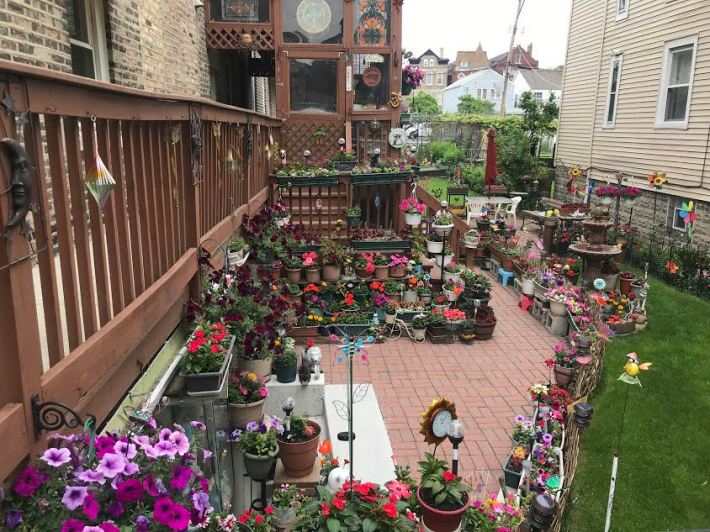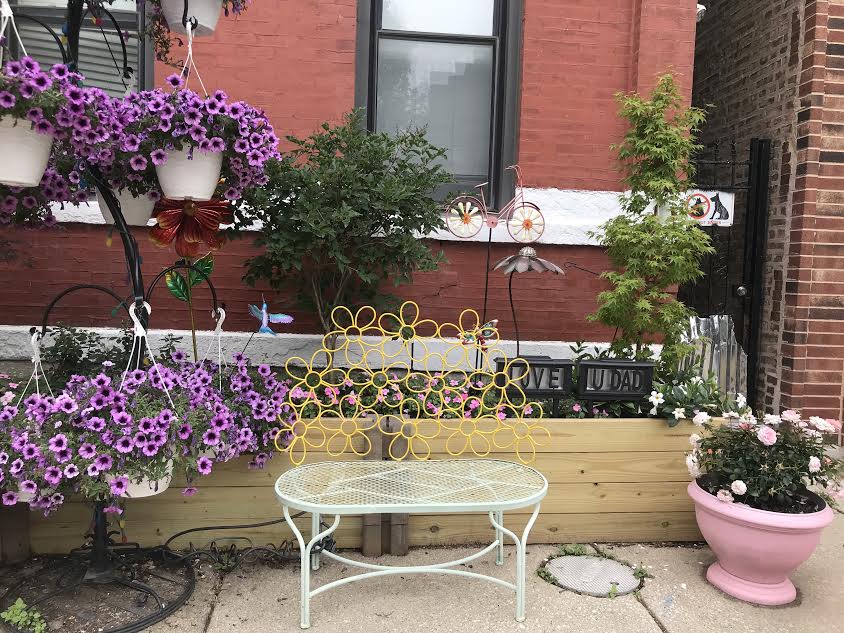I have been thinking a lot about the concept of “Latino Urbanism,” a term coined by planner James Rojas that is supposed to describe the many ways that immigrants from Latin America are remaking cities to feel more like the places from which they came. In a recent interview in Streetsblog USA, Rojas talked about the key principles of this phenomenon, which can include front-yard features like tables and chairs, fountains and statues of the Virgin Mary, and tile or concrete flooring:
Latinos have different cultural perceptions about space both public and private. They bring that to the U.S. and they retrofit that space to those needs.
They will retrofit their front yard into a plaza. We don’t have that tradition in America. But they change that into a place to meet their friends and neighbors.
He also mentions what may be the driving force for the way many people of color orient the space outside their homes. "I think a lot of people of color … these neighborhoods are more about social cohesion. Your family and neighbors are what you’re really concerned about."

Walking around Chicago's Little Village community, where I live I sometimes try to find words for the nostalgia and comfort I experience. Having recently visited my family in Jalisco and Michoacán for the first time in many years, I find common reminders of home in Little Village. In my grandma’s town in Michoacán, I would pass the days sitting on a chair alongside her in front of our home, talking to everyone that would come by. The purpose of the home seemed to be to ensure as much connection with neighbors and family as possible. Walking with my aunt in her town in Jalisco, we rarely went a block without encountering someone she knew sitting in front of their home. While it’s hard to romanticize my family’s towns, it’s also difficult to experience that sort of spontaneous human connection in many Chicago neighborhoods.
Little Village, and other majority-Latinx neighborhoods in Chicago, offer a glimpse of what like is like the Mexican towns where my family members live. I see corners and stoops become gathering spaces for people, particularly when there are few formal gathering spaces like plazas or parks in the neighborhood. In 2014, after years of lobbying by residents, Little Village got a new green space called La Villita Park, directly across the street from Cook County Jail.

Last year, some residents started a petition after noticing that benches on Marshall Boulevard were removed, raising fears that the sidewalk would be privatized to create outdoor seating for customers of the café Sip 22. Residents know the importance of preserving public space and continuing to remake space for their purposes. I’ve gotten used to local street corners that serve as places for vendors to sell merchandise or food, or public space for people to hang out.
I know that when residents congregate on street corners, some people see it as a comforting sign of community, while it makes others uneasy. Large groups of people of color hanging out are often viewed as a negative thing, particularly in working-class communities. Granted, there are public safety challenges some communities face that may make certain groups vulnerable to violence. That may encourage some residents to stay indoors. I don’t dismiss that at all. It’s a reality our communities of color face. However, when friends and family members gather outside in highly visible ways, it’s an encouraging sign of resilience.

Walking around Little Village, I see signs of community residents taking ownership of their space and making their mark. It could be the ubiquitous image of La Virgen de Guadalupe throughout the neighborhood or the occasional furniture you see on the grass or dirt (my personal favorite is a chair near a tree trunk near my house.) There isn’t uniformity in the way residents in my community to utilize space and there is comfort in that freedom, particularly because uniformity is sometimes expected on our streets. I think spontaneity and surprise should be a core part of how we interact with people in our cities. If more Chicagoans oriented their spaces for interaction with others, I believe it could could help foster more of a sense of community in our neighborhoods.




